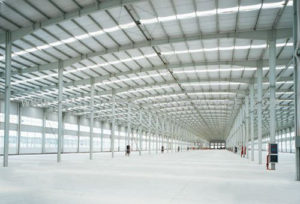
Cost Comparison: Steel Warehouses vs. Traditional Structures
When considering the construction of a new warehouse, one of the primary decisions involves selecting the building material. Traditionally, concrete and wood have been popular choices, but steel warehouses have emerged as a highly competitive and often preferable option. This blog explores the cost implications of choosing steel warehouses as opposed to traditional concrete and wood structures, examining not only the initial costs but also long-term considerations.
Initial Construction Costs
When planning a new warehouse, the initial construction costs form a significant part of the financial considerations. Understanding these costs in greater detail can help businesses make informed decisions about their investment. Steel warehouses and traditional constructions such as those using concrete and wood each come with distinct cost implications during the initial phases of development.
Steel Warehouses
Steel structures are known for their cost-effectiveness, especially when it comes to large industrial buildings like warehouses. The key to steel’s cost efficiency lies in its prefabrication process. Steel components are engineered and fabricated off-site in a controlled environment, which reduces waste and speeds up construction time significantly. The quick assembly of prefabricated pieces on the construction site translates to lower labor costs and a shorter project timeline, which can considerably reduce overall construction costs
The construction of steel warehouses is generally perceived as cost-effective, but several factors influence these costs:
- Prefabrication: Steel components are usually engineered and manufactured in a factory setting, which allows for precise control over materials and reduces waste. This process also speeds up the assembly time on site. The cost savings from prefabrication can be substantial, primarily due to reduced labor requirements and minimized construction waste.
- Labor Costs: The labor involved in constructing a steel building is significantly less in terms of time and workforce needed compared to traditional methods. Steel parts arrive on-site ready to assemble, and modern connection methods often require fewer skilled laborers, which can lead to lower overall labor costs.
- Material Costs: While the cost of steel can fluctuate based on market conditions, the predictable and streamlined nature of steel construction can mitigate unexpected expenses. Additionally, the long-term durability and maintenance savings can offset the initial material investment over time.
- Foundation Requirements: Steel structures are typically lighter than those constructed from concrete, reducing the need for extensive foundations. This can result in significant savings in both time and materials used for laying the foundation.
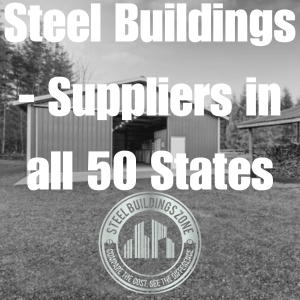
Concrete and Wood Structures
In contrast, traditional concrete and wood structures generally involve more labor-intensive and time-consuming construction processes. Concrete, particularly, requires significant curing time, which can delay project completion and increase labor costs. Wood, while faster to construct than concrete, involves complexities in terms of craftsmanship, especially for larger structures, which can drive up labor expenses.
In contrast, traditional constructions with concrete and wood involve different cost dynamics:
Concrete Structures:
- Material Preparation and Curing: Concrete construction requires significant onsite preparation and time for curing, which can extend the construction timeline and increase labor costs.
- Foundation and Reinforcement: Concrete buildings generally require more robust foundations due to their weight, which increases both material and labor costs. Additionally, reinforcements with rebar or other materials are necessary to enhance the building’s structural integrity, adding to the expense.
- Labor Intensity: The process of setting up forms, placing concrete, and finishing surfaces requires skilled labor and careful timing, leading to higher labor costs.
Wood Structures:
- Material Costs: Wood can be less expensive than steel upfront, depending on the type and quality of the wood used. However, prices can vary significantly based on market supply and demand.
- Construction Time: Wood frames can be constructed relatively quickly, which might save some labor costs compared to concrete. However, wood construction typically requires more pieces and more complex carpentry, which can negate some of these savings.
- Treatment and Maintenance: Wood requires treatment to resist moisture, insects, and fire, which can add to the initial costs. Ongoing maintenance is also needed to ensure the longevity of the structure, impacting the total cost of ownership.
The choice between steel, concrete, and wood for warehouse construction should consider not only the initial costs but also the implications on the project timeline, labor needs, and long-term maintenance. Steel often offers the best balance of cost-efficiency, speed, and durability, making it a compelling choice for businesses looking to maximize their investment in new warehouse facilities.
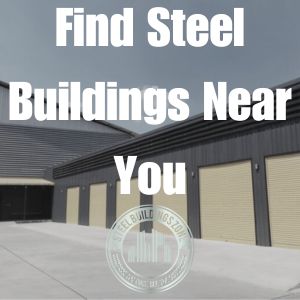
Comparing Durability and Maintenance of Steel, Concrete, and Wood Buildings
When businesses invest in new facilities, the durability and maintenance of the building materials are critical factors to consider. The longevity of a structure not only affects its usability but also impacts the long-term financial health of a company due to ongoing maintenance costs and potential replacement expenses. Here’s how steel, concrete, and wood buildings compare in terms of durability and maintenance.
Steel Buildings: Built to Last
Steel is renowned for its strength and durability, making it a top choice for commercial and industrial buildings that require resilience and longevity. Steel structures are engineered to withstand harsh conditions, including heavy winds, earthquakes, and snow loads, which makes them suitable for a wide range of geographical areas. The inherent strength of steel allows for larger free spans in building design, reducing the need for internal load-bearing walls and providing greater flexibility in the use of space.
One of the major advantages of steel is its resistance to many of the environmental factors that typically degrade other materials. Steel does not rot, warp, or expand and contract with moisture, which are common issues with wood. It is also impervious to pests such as termites, which can cause significant damage to wood structures.
However, steel is not without its vulnerabilities. Corrosion can be a concern, especially in environments with high humidity or saline air. Modern steel buildings, though, are typically treated with corrosion-resistant coatings that protect the steel for decades. When maintenance for corrosion is needed, it generally involves periodic reapplication of protective coatings, a cost that is relatively minimal compared to the potential expenses associated with structural repairs in other materials.
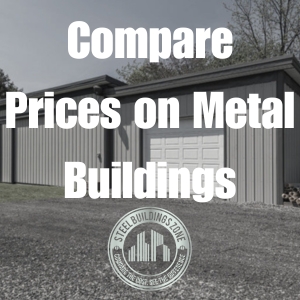
Concrete Buildings: The Fortresses
Concrete is another highly durable material often used in buildings where structural integrity and fire resistance are paramount. Its ability to resist fire and extreme weather conditions makes it a preferred choice for safety-critical structures such as hospitals, schools, and emergency services facilities.
The robust nature of concrete also means that it can last for many years with relatively little maintenance. However, concrete is not completely maintenance-free. It can be susceptible to cracks and spalling, particularly in varying climates where freeze-thaw cycles are common. Repairing concrete can be labor-intensive and costly as it often involves patching the cracks or replacing entire sections of concrete.
Additionally, concrete buildings have limited flexibility when it comes to modifications or expansions. Altering a concrete structure typically requires significant demolition and reconstruction, which can be disruptive and expensive.
Wood Buildings: Natural and Nurturing
Wood has been a traditional building material for centuries, cherished for its natural beauty, warmth, and versatility. Wood structures are often quicker and more cost-effective to construct than concrete, especially in residential and small-scale commercial applications.
However, wood requires more maintenance than steel or concrete because it is vulnerable to environmental influences. Wood can rot, mold, or deteriorate if not properly maintained. It is also susceptible to insect infestation, which can compromise the structural integrity of the building. To preserve the quality of wood, treatments and regular maintenance, such as staining, sealing, and repairing damaged areas, are necessary to protect against moisture and pests.
The insulation properties of wood are generally better than those of steel and concrete, which can make wood buildings more energy efficient. However, this advantage may be offset by the increased maintenance needs and potential for deterioration if the wood is not adequately protected from the elements.
Considering Energy Efficiency and Insulation
Steel Warehouses: Modern steel buildings can be highly energy-efficient. Advances in insulation technologies allow steel structures to retain heat and cool air more effectively than in the past. Additionally, steel roofs reflect solar radiant heat, which can reduce cooling costs. Integrating energy-efficient systems into a steel building’s design can result in significant savings on heating and cooling expenses.
Concrete and Wood Structures: Concrete has excellent thermal mass, which helps in stabilizing temperature fluctuations within the building by absorbing and releasing heat slowly. However, without proper insulation, concrete walls can result in higher heating and cooling costs. Wood offers better insulation than steel but generally requires additional insulation materials to match the energy efficiency that modern insulated steel structures can provide.
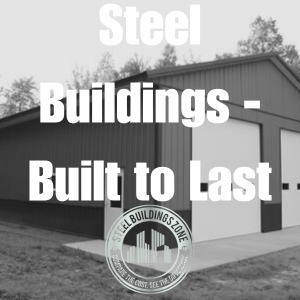
The Environmental Impact of Steel Warehouses
Steel Warehouses: Steel is one of the most recyclable materials in the world, and a significant percentage of steel used in building constructions today comes from recycled materials. The ability to recycle and reuse steel decreases its environmental footprint, making it an appealing choice for eco-conscious businesses.
Concrete and Wood Structures: Concrete’s environmental impact is considerable; its production generates a significant amount of CO2. However, it is durable and offers longevity if maintained properly. Wood is a renewable resource, but its treatment and preservation involve chemicals that can be harmful to the environment. Additionally, deforestation associated with wood use can be a concern.
Flexibility and Adaptability
Steel Warehouses: Steel offers architectural flexibility and can be engineered to create large, open spaces without the need for numerous support columns. This flexibility makes steel particularly attractive for warehouse uses, where large, open spaces are essential for storage and machinery movement. Steel structures can also be easily modified, expanded, or reconfigured, providing adaptability as business needs change.
Concrete and Wood Structures: Concrete and wood can offer some degree of flexibility, but typically, they are not as adaptable as steel. Concrete, once set, is difficult and costly to modify. Wood offers more flexibility than concrete and can be aesthetically pleasing, but it doesn’t support the same span lengths as steel without support columns or beams.
Choosing the right material for a warehouse involves a careful analysis of both initial and long-term costs. While steel warehouses may have a higher initial cost in some cases, their durability, low maintenance needs, energy efficiency, and flexibility often result in a lower total cost of ownership compared to traditional concrete and wood structures. Businesses must weigh these factors based on their specific needs, budget, and priorities to make the best decision for their new warehouse investment.

Leave a Reply